
Igniting innovation: Discovering cutting-edge methods to train firefighters
By Brittani Schroeder
Features Training Week editors pick firefighter training firefighters Ontario toronto training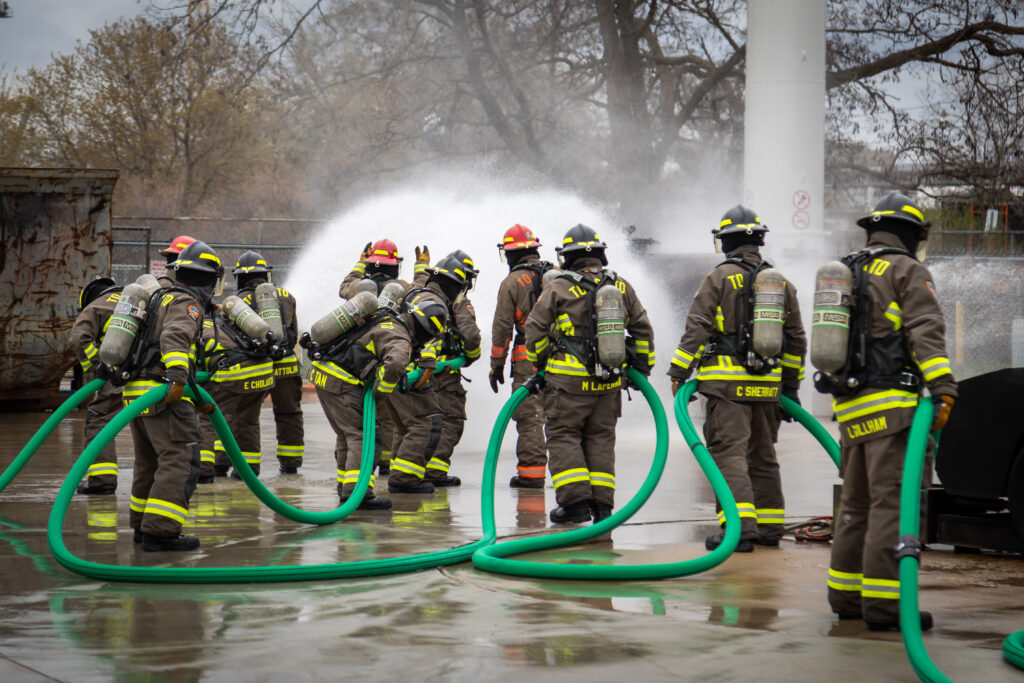 Photo credit: Toronto Fire Service
Photo credit: Toronto Fire Service A firefighter is never considered “fully trained”. With the ever-evolving role of a first responder, and the new science and technology that goes into fire fighting today, the training division of a fire department never has a quiet day.
Canadian Firefighter recently had the opportunity to speak with Geoff Boisseau, Division Commander – Operations Training and Robert Pennington, Division Commander – Technical Operations at Toronto Fire Services (TFS) about how training has changed over the years, how they view training at TFS, and what are some of the most important aspects of training now.
Toronto Fire Service
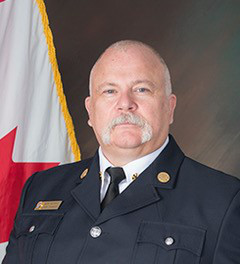
Photo credit: Toronto Fire Service
Toronto has a population of more than three million people, and there are just over 3,200 TFS staff, 2,700 of which are Operations firefighters, serving its communities. Toronto firefighters see everything from structure fires to subway incidents, to water rescues, to medical incidents and more. The city also has the second highest number of high-rises in North America and has more cranes in the air than anywhere else, according to Geoff Boisseau. “We have areas that are nothing but high-rises, but if you cross a street or drive one kilometer, suddenly you are surrounded by industrial buildings, and then another kilometer you have a fully low-rise residential area. We have a waterfront, bluffs, rivers and landlocked lakes, and a trail system through downtown, all of which we need to have access to. There are constantly many wheels in motion,” he says.
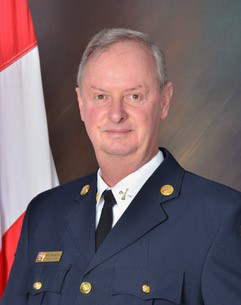
Robert Pennington, Division Commander – Technical Operations. Photo credit: Toronto Fire Service
TFS just completed training a class of 103 probationary fire fighters, which is larger than some municipal fire services across Canada. This can pose challenges for training, because “where some departments train 10 to 20 probationary fire fighters at a time, we trained over 100,” says Boisseau. It is his understanding that this is the largest fire department recruit class in Canadian history.
Robert Pennington stresses the importance of keeping every member up to date on their training, but there are ongoing challenges that this creates. “Of course, this training is in addition to the calls we also must attend every day. It’s hard to make sure that we get the right people in the right courses all the time. Also, a challenge comes from attrition, transfers and promotions, because sometimes the people that we train today will be gone tomorrow.”
Innovation in training
Pennington oversees the Technical Operations (TO) Division at TFS which, as he says, encompasses everything “non-fire”, including technical rescues and hazardous materials. His team works out of TFS’s Technical Operations Training Centre. Technical Operations training includes hazmat – chemical, biological, radiological, nuclear and explosives (CBRNE), public order, the active shooter/hostile event response (ASHER) program, the technical aspects of the NFPA 1006 Standard for Technical Rescue Personnel Professional Qualifications regulation, the marine division and the heavy urban search and rescue (HUSAR) team. Among the team’s goals is to ensure all TFS technical operations training meets or exceeds current standards, while continuing to be global leaders in service delivery.
To facilitate this training, TFS utilizes an Associate Training Instructor (ATI) program. In this program, TFS will train frontline personnel as a discipline-specific instructors. The ATIs are subject matter experts (SMEs) both while training and when they are on duty. “In this way, we are keeping the expertise on the apparatus. Our SMEs are available when they ride an apparatus to best serve the citizens of Toronto and the TFS,” says Boisseau. “The difficult aspect to manage is bricks and mortar—we don’t have enough space for the amount of training we require. We are rolling out programs in a mobile capacity.”
“We feel the ATI program lends credibility to the training as well, because our firefighters are learning from actual subject matter experts who perform these skills, and that carries a lot of weight,” says Pennington.
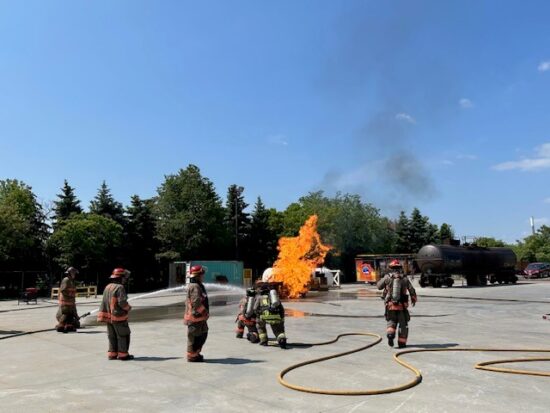
Photo credit: Toronto Fire Service
Hazmat and CBRNE
The CBRNE program has its roots with the federal responder training program (FRTP) developed at the Canadian Emergency Management College shortly after the events of Sept. 11, 2001. The TFS program took the FRTP as its base and has become a leader in CBRNE training and response as it continues to build and improve on its roots. “This program relies heavily on a joint team concept; we collaborate closely with police, fire, paramedics, and any other agency that we may require at the time. These services train together regularly,” he says.
TFS has dedicated hazmat units trained to the NFPA 470 standard, along with a number of companion apparatus who function as their backup, who are also trained to NFPA 1072. “We are creating a hazmat safety officer position,” says Pennington. “The training program we have created for hazmat was developed by some of our hazmat SMEs. TFS has had requests from other municipalities and agencies to attend our courses when space permits.”
Public order
The TFS Public Order team is trained to work on the front lines, alongside the police public order teams. Public order training is provided by the Toronto Police Service and is an intensive course that teaches specialist disciplines, including crowd dynamics and responder safety. “The firefighter’s main role is fire control on the front line, and they train alongside the police officers and wear specialized protective gear,” says Pennington.
ASHER program
The ASHER program is joint team project that includes firefighters, police and paramedics. “Training our ASHER team members is done with police, fire, and paramedic input. Each bring an area of expertise to the table,” Pennington says. The ASHER training meets or exceeds the NFPA 3000 standard. Using a school shooting as an example, he describes how the ASHER program-trained members can assist police officers. Once the active shooter threat has been neutralized, the fire service members are trained to go into the “warm” zone, dressed in specialized protective gear, alongside a paramedic, to rescue injured people as quickly as possible. “We’re hoping to have over 60 people trained in this skill in the coming months.”
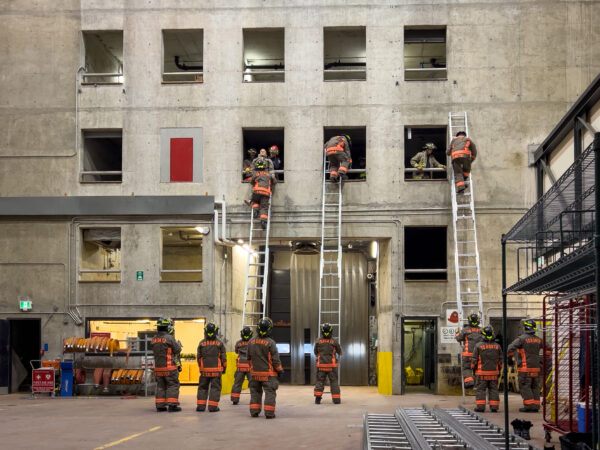
Photo credit: Toronto Fire Service
NFPA
NFPA 1006 training was legislated under Ontario Regulation 343/22 and is to be completed by 2028. The NFPA 1006 courses currently delivered at TFS include ice and swift water rescue, surface water rescue, structural collapse rescue, confined space rescue, trench rescue, rope rescue and vehicle rescue. Pennington does not anticipate any issues completing the technical training. “Our technical operations training calendar is full, and the only open days are just before and after Christmas. We are actively developing every single modality that falls under NFPA 1006, and we are seeing remarkable success in getting everyone up to standard. It’s not an easy task, but we’re using our facilities and equipment to the best of our abilities,” he says.
“If there’s an NFPA standard for it, we’re going to train to that and get it out there to our personnel,” says Boisseau. “For example, the ASHER program is NFPA 3000 compliant. There is no off-the-shelf training program available for it yet, but Commander Pennington, his team and counterparts from police and paramedics services are pioneering it. We are hoping that it will eventually help all municipalities, because instead of them having to create a program from scratch, we will have already done it for them.”
Lithium-ion response
The TFS training division is also actively working on a lithium-ion fire response plan, which started months ago. “There are now over 60 people sitting on a variety of committees and sub-committees looking at everything from safe response to lithium-ion battery fires to public safety/fire prevention concerns. This is an emerging hazard, and our team is working hard to keep pace with the technology,” says Pennington.
TFS Deputy Fire Chief Larry Cocco is working with the International Association of Fire Chiefs on this issue and is leading the development of a number of leading-edge solutions in response to this emerging risk.
There are many things to consider when attending a lithium-ion battery incident, such as: How are the firefighters going to put out the fire safely? How can they safely extricate people from their electric vehicles after a crash? How will they package the batteries to make them safe for transport? Where do the batteries go afterwards?
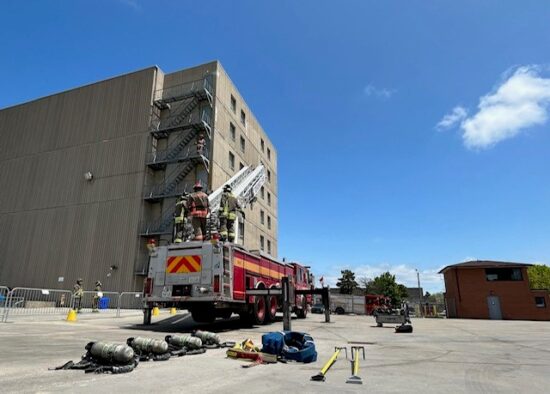
Photo credit: Toronto Fire Service
An additional emerging issue is the use of lithium-ion batteries as backup power storage, and the more they are utilized, the more issues firefighters will encounter. “It is a situation where we need to advance our actions on scene in a calculated and methodical way. We need to advance quickly to prevent the incident from quickly escalating but must ensure that we don’t advance too quickly. If we move too fast, we may miss something crucial,” says Pennington.
Marine unit
The TFS marine unit requires specialized training to operate the fire boats, which also falls under Pennington’s purview. His team, in collaboration with SMEs in the TFS Marine Division and technical operations ATIs create and deliver training courses inside, and outside, the city. “There is also a fire station on Toronto Island, and we need to make sure those firefighters have speciality training as well,” he says.
HUSAR and more
In Canada, Heavy Urban Search and Rescue (HUSAR) teams are trained to be able to perform the technical, structural collapse search and rescue skills used in the event of a disaster. “Our TFS HUSAR Team manager is a Division Chief within the Technical Operations division, and they ensure the HUSAR members are trained up to standard, and work in partnership with both the police and paramedics, in response to incidents in Toronto. The TFS HUSAR team also works under agreement with the Ontario Office of the Fire Marshal and can be deployed to structural collapse incidents outside Toronto by the Ontario Fire Marshal. The HUSAR team members are experts in structural collapse rescue and train using specialized equipment, including canine search teams,” Pennington adds.
On top of it all, Pennington’s team also plans for large events held within the city – events such as PRIDE, Caribbean Festival, sporting events and many others. The team ensures that TFS can respond to an incident within an event that may involve thousands of attendees while, at the same time, ensuring fire protection coverage remains intact for the rest of the city while the events take place. “The planning team works closely with other city divisions during the planning process,” Pennington confirms.
Advances in firefighter training
Just like Pennington and his team on the special operations side, Boisseau and his team work hard year-round to ensure that TFS operational firefighters are ready for any type of call. Aside from the actual fire fighting, staff also need to be certificated in pre-hospital care and medical delegated acts under TFS’ base hospital directives.
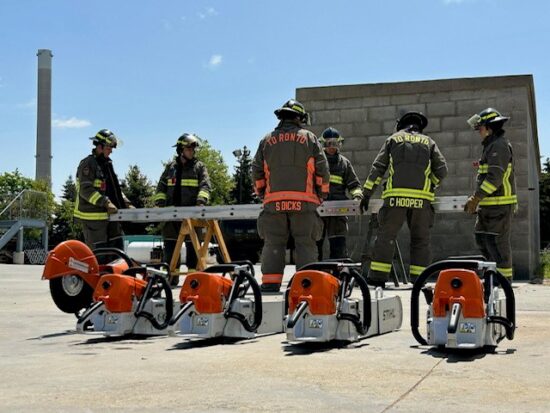
Photo credit: Toronto Fire Service
With the number of high-rise buildings in Toronto – and more scheduled to be constructed – TFS has a very robust high-rise training program led by ATIs who are SMEs in high-rise firefighting. The program is the most up to date high rise firefighting program in Canada, says Boisseau. In addition, TFS has changed their firefighting equipment to meet the requirements of NFPA and for greater protection of the firefighters and citizens.
A recent addition that Boisseau’s team has embraced and implemented is mobile training. To get from one side of Toronto to the other can take a very long time to drive. So, to maximize available training time, apparatus coverage in the city and to reduce their carbon footprint, TFS now utilizes mobile training units that can travel to stations or mobile training sites. “For example, we purchased two forcible entry trailers that an associate training instructor (ATI) can drive to a station and park, teach a group of firefighters the necessary skills, and then drive it off to the next location. With these units, we can train staff in or close to their first due response area, to keep them available,” says Boisseau.
“TFS needs our recruits to know that we are not just putting the wet stuff on the red stuff. They need to understand how fire burns, where it is going, the need for active cooling and using specific types of nozzles and water patterns. This is going to make us safer in the long run. It is a dangerous job.” – Geoff Boisseau, Division Commander – Operations Training, Toronto Fire Service
TFS has other mobile training units: one for roof operations that can replicate different roofing situations, and another that supports firefighter survival skills (for example, wire entanglement, emergency SCBA skills, upper floor emergency escapes, etc.). Boisseau says the next step will be to have mobile medical training units that will take the classroom, complete with training manikins, right to each station. “Those additional mobile training units will come when funding is available. Training does not come cheap, and we must ensure that the cost of the equipment we bring in represents a substantial return on investment. Ultimately, we know that if our staff are better trained, the citizens of Toronto are better off.”
Recently, TFS added a new multi-story live fire facility to their existing suite of propane-fueled, purpose-built concrete burn houses and training props that TFS currently operates. It features heat centres as additional technology, so that after the training, firefighters can be shown where and what the heat source was. “This helps our members better understand fire dynamics. Remember, fire fighting is a science. It is a full scenario-based training, run by our ATIs who can teach the science of fire while also enabling Firefighters to develop and hone their skills in a controlled environment.”
There is also an extensive online training program in place at TFS. “Training and Technical Operations has two specialists in this area, and they create content with the SMEs for our personnel to complete when not in practical training. They can send out pre-course material to go through before the actual training. Before we moved online, our members would sit in a classroom for an hour to get this material, and then drive back to the station in traffic,” he says.
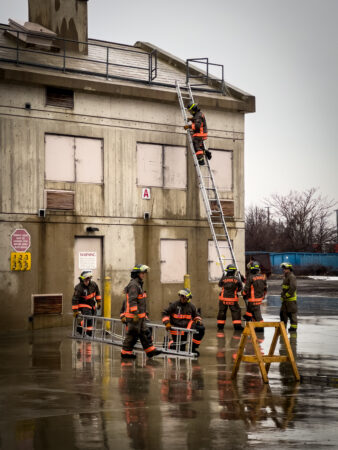
Photo credit: Toronto Fire Service
In addition to physically preparing their firefighters, they need to mentally prepare them as well, and TFS teaches the Road to Mental Readiness (R2MR) program. “Mental health of our staff is a priority of TFS and a top priority of our Fire Chief, Matthew Pegg,” says Boisseau. TFS Training Division have staff working in direct collaboration with both the TFS Staff Psychologist and Toronto Police to effectively respond to the increasing number of Persons in Crisis calls that are the reality in Toronto.
“Fire fighting has higher levels of cancer than the general population, so it is important that we also focus on that. We just completed our Stand Down for Safety training regarding cancer education for our staff and steps to lower the risk,” adds Boisseau.
Science in the fire ground
As Boisseau and Pennington (who have a combined operations firefighting experience of 70 years) describe, when they were shown how to fight fires when they first started out, they learned from a senior member, who learned from their senior member, and so on. Now in the fire service, with both experience and science integrated into fire fighting, it gives firefighters an opportunity to be more effective, efficient, and safer on the fire ground. “It has changed the equipment we use as fires are not the same—they are evolving, so we are evolving. One of the biggest changes is that we had natural elements burning in the past; now, with the use of synthetic materials, fire is a different beast,” says Boisseau.
The TFS recruit program includes fire dynamics, smoke reading and live fire program. “TFS needs our recruits to know that we are not just putting the wet stuff on the red stuff. They need to understand how fire burns, where it is going, the need for active cooling and using specific types of nozzles and water patterns. This is going to make us safer in the long run. It is a dangerous job.”
Conclusion
When it comes to training, Boisseau and Pennington and their respective teams are committed to ensuring that TFS continues to be a global leader in training. As Pennington says, “We are fortunate to have the resources, staff and direct experience required to develop and implement leading edge training programs.”
Print this page